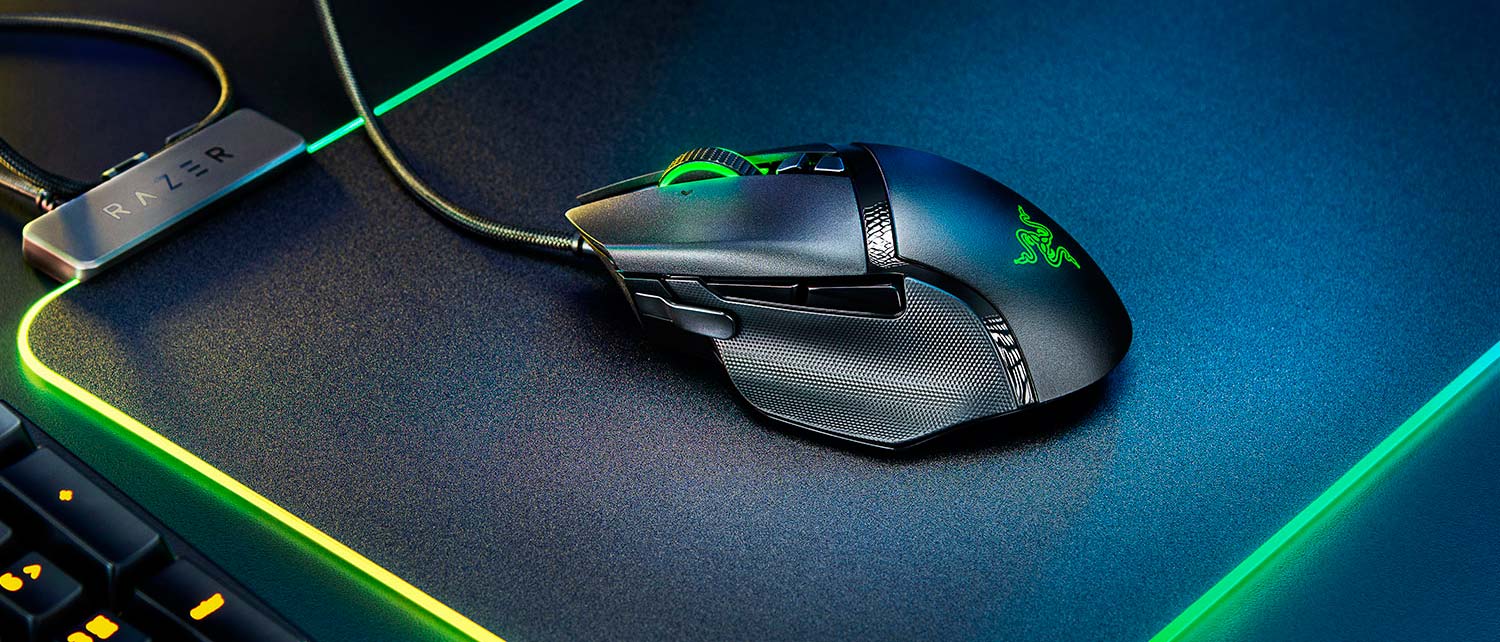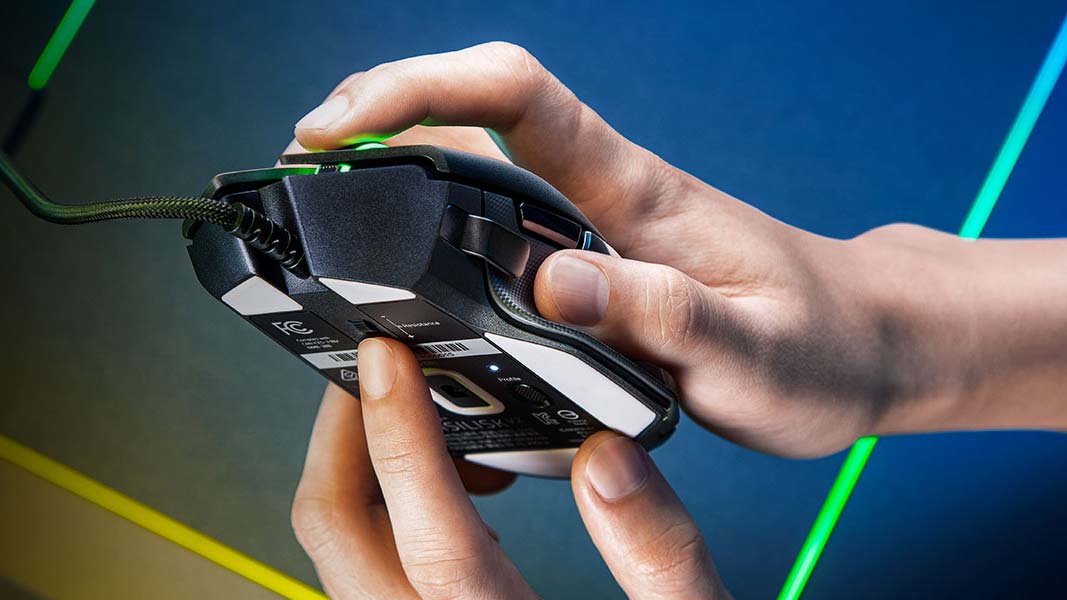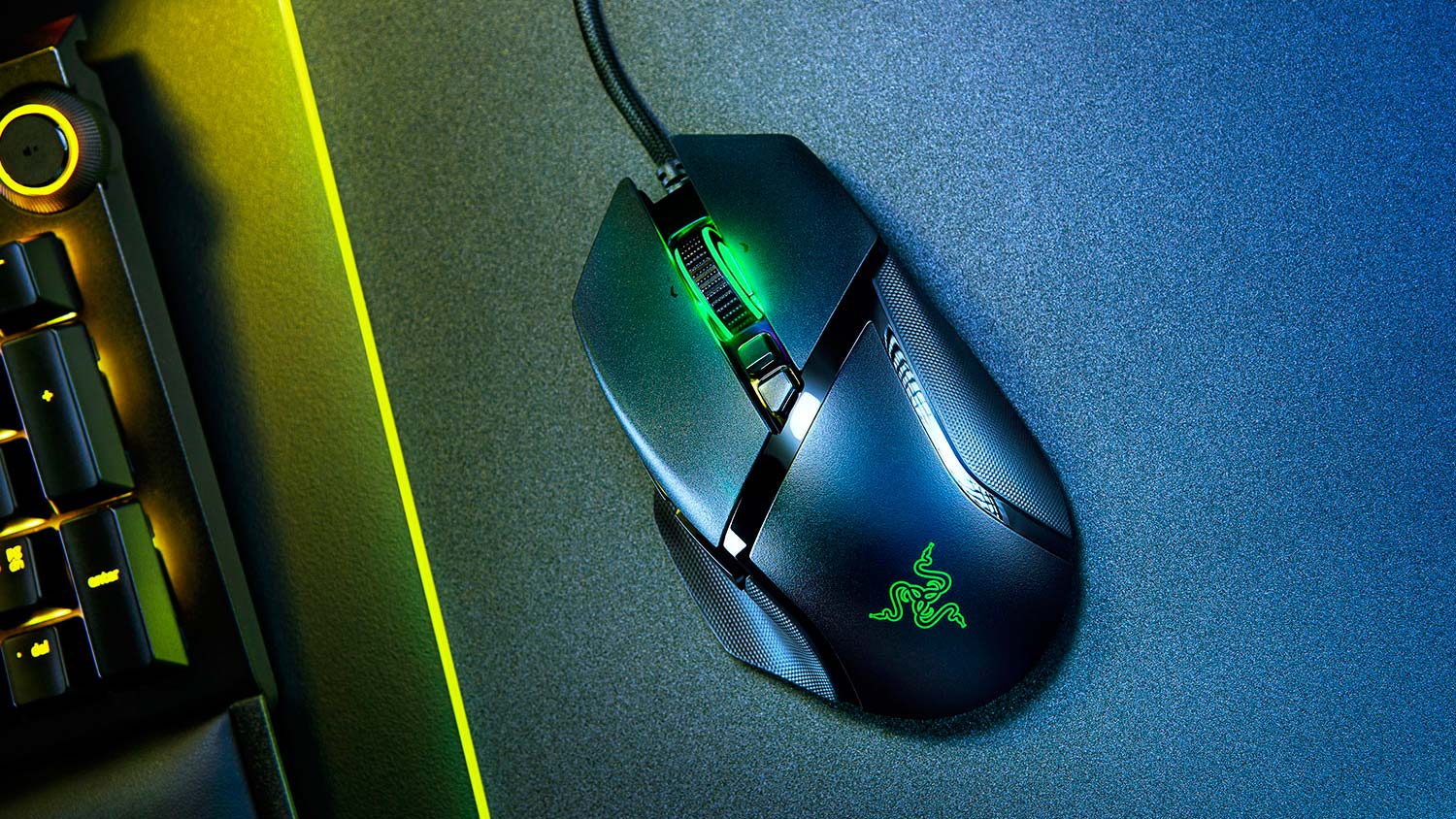Tom's Guide Verdict
The Basilisk V2 isn't the last word in FPS mice, but it's worth checking out if competitive multiplayer is your thing.
Pros
- +
Comfortable design
- +
Innovative clutch
- +
Great in-game performance
- +
Better than the previous model
Cons
- -
Inconvenient scroll-wheel adjustment
- -
Software has a steep learning curve
Why you can trust Tom's Guide
The Basilisk is one of the newer gaming mouse designs in Razer's arsenal, having debuted in 2017. Since then, Razer has released a few variations on the FPS-friendly mouse, including a budget model and a wireless version. Now, the Razer Basilisk V2 ($80) is here, and it's similarly good. The grips are a little more comfortable, the design is a little more striking, and the sensor is a little more powerful. Otherwise, though, it's just a solid mouse that's not too dissimilar from its last few iterations.
The Basilisk V2 isn't the last word in FPS mice, but it's worth checking out if competitive multiplayer is your thing. Even if you just want a good all-around mouse for everyday play, the Basilisk V2 should fit the bill, although it's a little more expensive than some competing models.
Design
The Basilisk V2 is similar to its wired predecessor, but it's even more similar to the wireless Basilisk Ultimate that came out late last year. This new mouse has an ergonomic design, with angular strips of plastic crisscrossing the face, as well as textured grips on either side, a slightly extended thumb rest and a middle-height profile.
The mouse also has the Basilisk's signature "clutch," a small, optional thumb button that's especially helpful for dots-per-inch (DPI) sensitivity-lowering maneuvers in FPS games. The clutch is fantastically comfortable and useful, although if you don't want to use it, don't worry; it's incredibly easy to pluck out the doodad and replace it with a small rubber stopper.
There's also a relatively cool feature to be found if you flip the mouse over: a resistance dial for the scroll wheel. With this, you can turn up the resistance for precision or turn down the resistance to scroll through tons of text with a single flick of your finger. I wish there were some way to gauge resistance levels other than via trial and error (a few colored markers would not have gone amiss), but it's a useful feature, and it's not too difficult to manipulate. I also would have liked to be able to adjust the resistance without flipping the mouse over, like you can do with some Logitech mice, but the level of customization the Basilisk V2 offers might be worth the inconvenience.
Otherwise, the button layout is similar to that of previous Basilisk models. You'll find a left button, a right button, a clickable scroll wheel and two buttons to adjust DPI on the mouse's face. On the side, there are two thumb buttons in addition to the aforementioned clutch. It's a comfortable mouse, especially since Razer has improved the mouse's gliding feet for smoother control.
Features
For new features (compared to previous wired models, anyway), the Basilisk V2 has the adjustable scroll wheel, two finely textured finger grips, better gliding feet and a more accurate sensor that offers DPI up to 20,000. This mouse also offers five onboard profiles, which should prove useful for tournament or LAN-party players. To switch among them, you can use a button on the underside of the mouse, which is a little inconvenient, or reprogram one of the face buttons, which takes away a potentially useful input. Neither solution is perfect, but neither one is that bad, either.
Get instant access to breaking news, the hottest reviews, great deals and helpful tips.
To reprogram buttons or adjust the RGB lighting (one light is in the scroll wheel, the other is in a Razer logo on the palm rest), you use the Razer Synapse software. When the Basilisk launched, this software was still in beta and was something of a navigational hazard, crashing often and hiding useful features behind convoluted menus.
These days, Synapse is much more stable and user-friendly, although there are still a lot of options. There are no fewer than eight separate tabs, each of which has up to four submenus. Once you get the hang of using the program, of course, it's not that hard to recolor the lighting, create macros, assign functions to the thumb buttons or link individual games to specialized profiles. But there's a definite learning curve, as well as a sense that the procedure is more complicated than it really has to be.
Performance
I tested the Basilisk with Overwatch, Age of Empires II: Definitive Edition, Thronebreaker: The Witcher Tales and World of Warcraft to see how well it handled different genres. I paid special attention to Overwatch, since the clutch is particularly useful for slowing down DPI temporarily in FPS titles. While controlling Tracer, I got a kick out of clicking the clutch, lining up a shot on an enemy, then letting go and rewinding time to escape retribution. It's not a game-changing feature, but it's helpful, and it might justify the Basilisk V2's high asking price for dedicated FPS fans.
Aside from that, though, the Basilisk V2 was a perfectly good mouse, regardless of genre. I got a lot of use out of the clutch in Age of Empires II, where having another shortcut for constructing buildings or creating army control groups is always convenient. For games like Thronebreaker, I just detached the clutch, which took all of 5 seconds, 10 if I was feeling particularly clumsy that day. The Basilisk V2's high-grade optical sensor suits just about any game well.
Bottom line
The Basilisk V2 is a smart improvement on an already-good mouse. I'm not convinced that it's better, on the whole, than the Corsair M65 RGB Elite, which costs a whole $20 less, but it's at least worth checking out. The clutch is such a good idea that I'm surprised no other gaming company has copied it, while the rest of the mouse feels comfortable and looks slick.
Those who aren't married to FPS controls might be just as well served by the Razer DeathAdder V2, which costs $10 less. But $10 over the course of a gaming mouse's life span isn't that much, so whichever one feels more comfortable is probably the right choice for you.

Marshall Honorof was a senior editor for Tom's Guide, overseeing the site's coverage of gaming hardware and software. He comes from a science writing background, having studied paleomammalogy, biological anthropology, and the history of science and technology. After hours, you can find him practicing taekwondo or doing deep dives on classic sci-fi.




